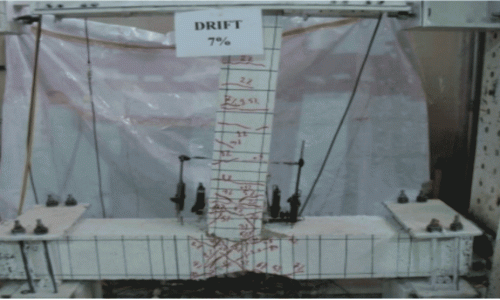
Experimental Programs
Seismic retrofitting of beam-to-column connections in reinforced concrete structures using groove-cutting and complete wrapping with FRP technique
Our research team focused on a groundbreaking study involving the introduction of a unique groove-cutting pattern in rhombus and square shapes within the critical region of the beam-to-column reinforced concrete connection. This innovative approach utilized the near-surface mounted (NSM) technique. Simultaneously, we explored the seismic retrofitting impact of integrating handcrafted FRP rebars seamlessly within a one-centimeter depth of the column’s core and the critical beam region. The study compared the effects of the fresh groove-cutting pattern with complete FRP wrapping and investigated the behavior of beam-to-column reinforced concrete connections in their standard design state versus their retrofitted condition. Additionally, we conducted an in-depth examination of the seismic behavior of beam-to-column reinforced concrete connections, specifically those fortified with handcrafted FRP rebars in the critical region using the NSM technique. Our comprehensive research also included testing and evaluating two types of innovative retrofitting patterns – square and rhombus-shaped – within the established grooves in the critical region of the beam-to-column reinforced concrete connection. The experimental study meticulously analyzed the combined effect of the groove-cutting technique and complete FRP wrapping on the seismic retrofitting of beam-to-column reinforced concrete connections.



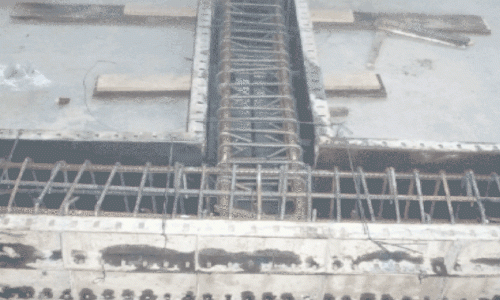









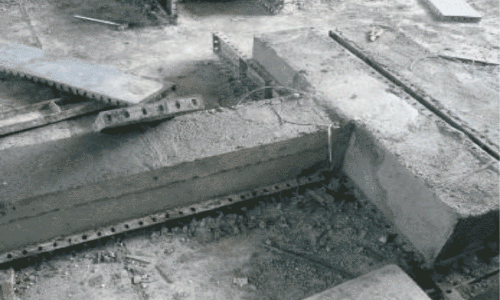




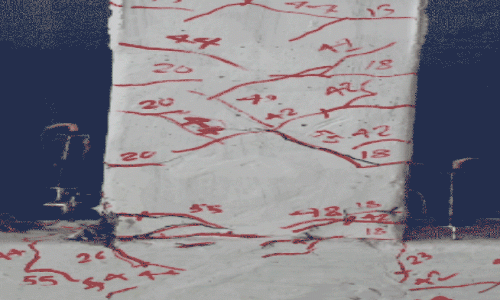



Experimental Study of the torsion-Bending Interaction of Reinforced Concrete Beams with CFRP Plates
Our research team focused on a groundbreaking study involving the introduction of a unique groove-cutting pattern in rhombus and square shapes within the critical region of the beam-to-column reinforced concrete connection. This innovative approach utilized the near-surface mounted (NSM) technique. Simultaneously, we explored the seismic retrofitting impact of integrating handcrafted FRP rebars seamlessly within a one-centimeter depth of the column’s core and the critical beam region. The study compared the effects of the fresh groove-cutting pattern with complete FRP wrapping and investigated the behavior of beam-to-column reinforced concrete connections in their standard design state versus their retrofitted condition. Additionally, we conducted an in-depth examination of the seismic behavior of beam-to-column reinforced concrete connections, specifically those fortified with handcrafted FRP rebars in the critical region using the NSM technique. Our comprehensive research also included testing and evaluating two types of innovative retrofitting patterns – square and rhombus-shaped – within the established grooves in the critical region of the beam-to-column reinforced concrete connection. The experimental study meticulously analyzed the combined effect of the groove-cutting technique and complete FRP wrapping on the seismic retrofitting of beam-to-column reinforced concrete connections.




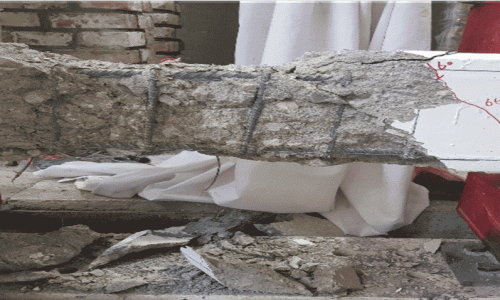





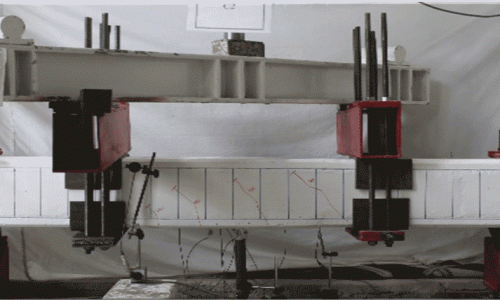


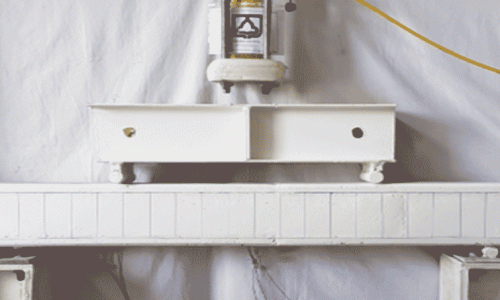
Enhancing Shear Capacity in Reinforced Concrete Beams through Grooving and FRP Sheet Integration
Addressing the nation’s imperative for innovative methodologies employing robust materials, this thesis advocates the utilization of a thin layer of fiber-reinforced polymer (FRP) concrete to reinforce and enhance the resilience of concrete beams under diverse loading or corrosive conditions. The overarching goal is the rehabilitation of concrete beams through a laboratory-based approach, focusing on augmenting shear capacity and durability. While suggestions for the combined use of ordinary concrete and FRP have been presented, there exists a dearth of laboratory work on this amalgamation. Consequently, it becomes imperative to delve deeper into the structural and practical aspects of these materials, specifically examining the shear behavior of beams constructed with this composite. This study proposes a concentrated exploration of the shear behavior of beams reinforced with FRP materials via core grooving, shedding light on the behavioral patterns of such structures. Following the construction of specimens to observe crack patterns and enhance aesthetic appeal, the beams underwent a painting process. The longitudinal reinforcements and stirrups were marked using line coloration. Instrumentation wires were connected to the beams, linking them to the data acquisition system, and corresponding conversion factors were meticulously applied to each channel. Displacement sensors, load cells, pumps, and jack force were strategically positioned. Each test commenced with the calibration of the data acquisition system, ensuring precision, and loading proceeded under controlled conditions applied by the jack. At every loading stage, cracks were identified using a marker, and photographs were captured. The testing continued until a specimen reached its load-carrying capacity, displaying unmistakable signs of complete failure.







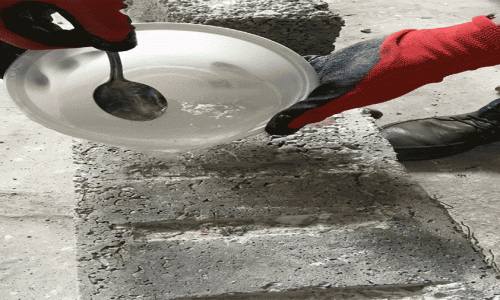








Experimental Investigation of the Impact of Proposed FRP-Strengthening Techniques on Reinforced Concrete Circular Short Columns
Reinforced concrete buildings with columns of varying heights often exhibit heightened damage in their shorter columns compared to their taller counterparts. Short columns, characterized by a relatively small effective height, attract larger forces due to their elevated stiffness. The stiffness of a member directly correlates with the force required for deformation—the greater the stiffness, the larger the necessary force. Short columns typically manifest damage in the form of X-shaped cracking, indicative of shear failure, resulting in a significant reduction in the energy dissipation capacity of the columns. This study undertook an experimental program to assess the efficacy of applying fiber-reinforced polymer (FRP) to short circular columns. The experimental program entailed the fabrication and testing of six short reinforced concrete (RC) columns, each wrapped with different configurations of carbon fiber-reinforced polymer (CFRP) sheets. All columns were designed in accordance with ACI 318-14 standards. To ensure shear weakness in the columns, stirrup spacing was intentionally larger than that recommended by concrete codes. The columns underwent lateral cyclic loading and constant axial load during testing. Test results were meticulously presented and compared to the control specimen. Ultimately, the effectiveness of the various strengthening techniques employed was evaluated based on parameters such as strength, ductility, and damage index.








Detecting Damage in Reinforced Concrete Beams through D.I.P and Wavelet Processing
- Detecting Exterior Damage in RC Beams through DIP
- Identifying Interior Damage in RC Beams Using WT
- Localizing Damage Through the Synergy of Digital Image Processing and Wavelet Transform
- Approximate Damage Quantification Using the Damage Detail Coefficient Comparative
- Analysis of Damage Detail Coefficients, Leading to the Selection of the Sym2 Method as the Optimal Wavelet Transform Technique


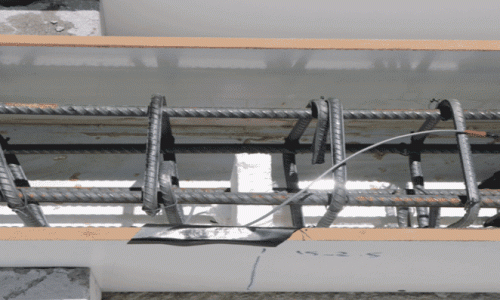





Laboratory Study: Exploring the Impact of Longitudinal FRP Bar to Steel Bar Ratio on Ductility and Flexural Behavior in Reinforced Concrete Beams
This research delves into the utilization of FRP composite rebars in reinforced concrete structures, aiming to explore the performance of concrete beams reinforced with steel rebars, FRP rebars, and a combination of both. Laboratory experiments were conducted, involving the construction and testing of actual specimens. Five concrete beams were subjected to evaluation under flexural anchorage. The specimens varied, with one exclusively using steel rebars. In the remaining specimens, 25% of the steel rebar was replaced with FRP rebars. Notably, the fifth specimen exclusively employed 100% FRP rebars, eliminating any tensile steel reinforcement. The experimental results revealed that the specimen denoted as F50S50, which featured a combination of 2 steel rebars and 2 FRP rebars, demonstrated the most robust performance. This specimen exhibited an approximate 11% increase in load-bearing capacity compared to the control specimen. Conversely, in specimens where the percentage of FRP rebars exceeded 50%, both load-bearing capacity and ductility experienced a significant decrease.





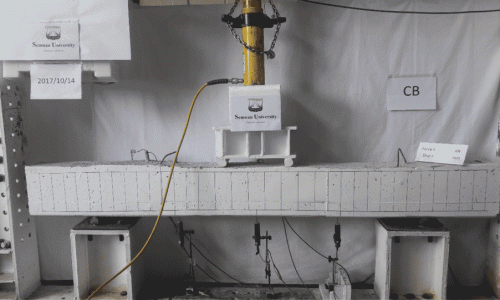



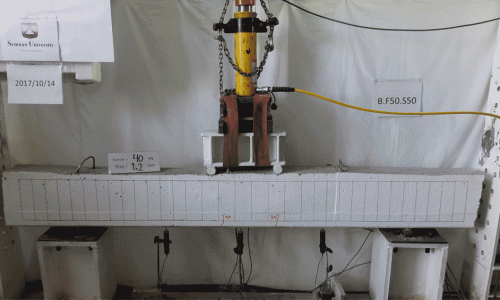



Investigating the Behavior of Reinforced Concrete Beams with Vertical Circular Openings Strengthened by FRP at the Beam-to-Column Connection: An Experimental Study
Incorporating openings in beams introduces discontinuity in stress flow and transforms the behavior of a simple beam into a more complex one, concentrating stress and promoting premature cracking in the vicinity of the openings. The ultimate strength of such a beam may be dangerously and significantly affected. In the design of reinforced concrete beams with openings, acceptable criteria for the elements should be utilized to ensure adequate strength and serviceability. Therefore, a precise assessment of the ultimate strength of the beam is essential. Due to the reduction in strength and the occurrence of cracks and failures in reinforced concrete beams with openings, the use of an appropriate method for repair and strengthening becomes crucial. Hence, special reinforcements such as strengthening with FRP fibers or reinforcement should be incorporated around the openings to prevent the spread of cracks and premature failure of the beam. Therefore, during the design of a structure, the locations of utility passages and the dimensions and positions of openings such as these should be determined in advance. Various shapes can be considered for openings, but rectangular and circular openings are more common. Circular openings are mostly used in piping systems and electrical resources. Most air ducts are rectangular in shape, which is why rectangular openings are used for their passage through the beams. Rectangular openings are rounded at the inner corners to prevent stress concentration. This precaution improves the behavior of the beam against cracking under service loads. In this research, five external beam-column connection specimens in reinforced concrete structures were constructed and experimentally tested at a 1:2 scale at the structure laboratory of Semnan University. One specimen serves as a standard reference without openings and CRCJ reinforcement. The other four specimens each have two vertical openings at one-third of the beam’s length, and three of them are reinforced with different strengthening systems. The second specimen has openings without reinforcement (RCJO), the third specimen is strengthened using a complete helical pattern of GFRP (FRCJO), the fourth specimen is strengthened with special rebar layout (RCJOB), and the fifth specimen is strengthened in a cross pattern (FRCJOB) using both GFRP helical reinforcement and additional rebar reinforcement around the openings. In all specimens with openings, two circular openings with a diameter of 10 cm at one-third of the beam’s length from the connection location were utilized.
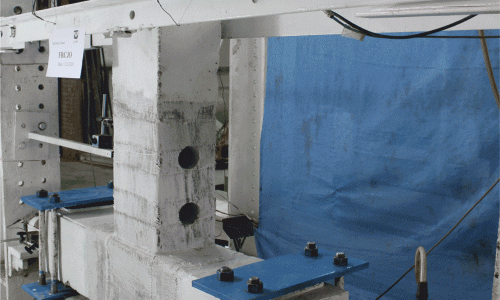







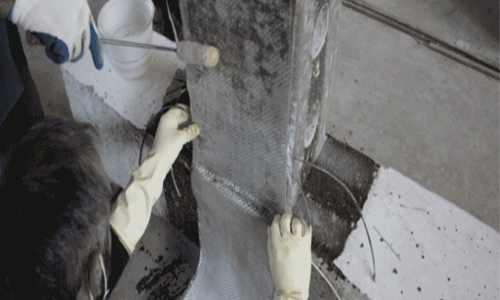






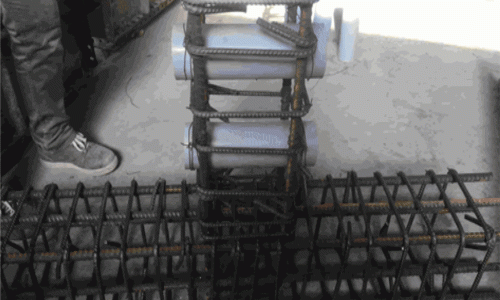



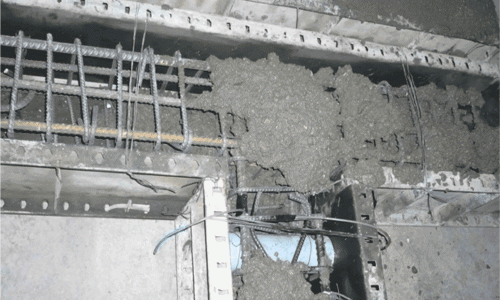

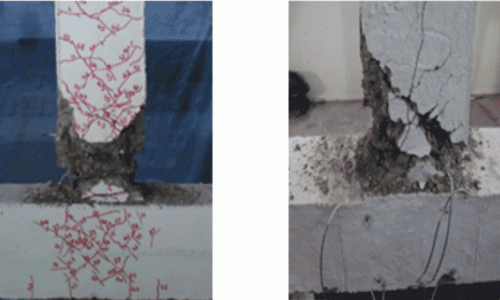




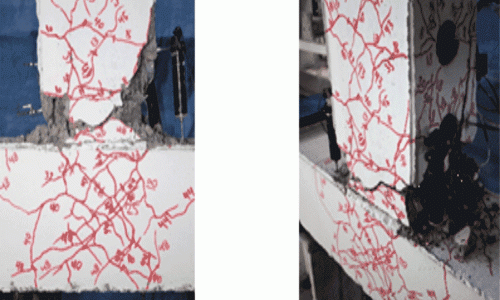
Experimental Approach to Enhancing Shear Strength in RC Beams Through Embedded Through-Section FRP Sheets: A Proposed Technique
This experimental study presents a new technique for enhancing the shear capacity of RC beams with FRP materials, which instead of bonding of FRP strips on the external face of element, involves perforating holes along the beam web, inserting FRP reinforcement inside these holes, and filling the holes with grout. Although according to technical literature, externally bonded and near-surface mounted FRP reinforcements are well known as effective solutions for increasing the shear capacity of RC elements, they are ill-suited for the cases where the concrete cover lacks sufficient bonding strength, and a debonding may allow the beam to fail before maximum capacity utilization. Furthermore, in the structures where the beam is connected to a floor, the FRP wrapping involves drilling holes in the floor to install the reinforcement, which creates shear vulnerability around the floor-beam contact area. Experimental results show that the beams reinforced with the proposed technique perform similar to or better than those with externally bonded FRP reinforcements. Also, the comparisons of the Applied Strengthening Material Index (ASMI) for specimens shows that the ratio of FRP shear contribution to the amount of FRP consumed is greater in the proposed technique than in the external bonding methods.



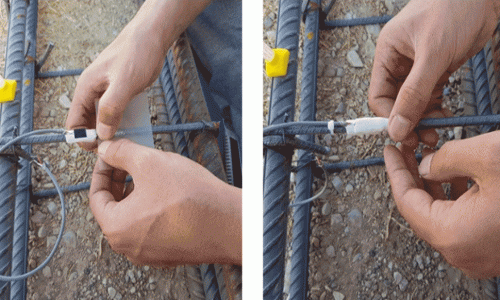




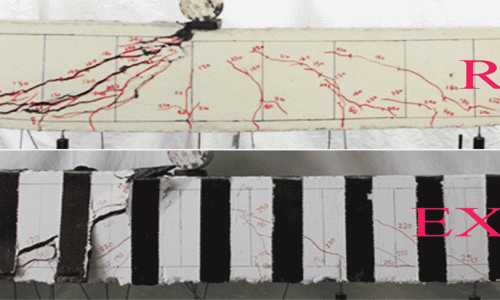







Experimental Investigation on Seismic Retrofitting of Reinforced Concrete Column Beams Using HPFRCC Concrete with Innovative Fitting Arrangement
One of the new materials in the manufacturing industry is capable of fiber cement composites, which requires laboratory studies to identify and investigate the behavioral performance of these composites due to lack of information at the international level. These new materials, if applied directly, show the strain hardening response after cracking. The performance of these composites is that when subjected to strain hardening behavior, it first creates many cracks in the cross-section before opening the cracks. However, the desirable advantages of HPFRCC compared to ordinary concrete or fiber concrete (FRC) can be high energy absorption capacity, hardness, plasticity, and high durability. The main purpose of defining this project is to investigate a better understanding of strain hardening behavior in HPFRCC, as well as to investigate and evaluate the possibility of using HPFRCC ¬ to solve the executive problems and also to economize the relevant projects in beam-column connections against earthquake loads. In this study and laboratory research first, after many studies, the best mixing design was considered and then in the executive part of the research, 5 samples of external beam-to-column connection with a scale of 1.2 were constructed and tested under cyclic loading. In this study, a type of two-end steel fiber hook with a rate of 1% was used. In this study, the ductility, cyclic behavior, energy dissipation, and hardness of HPFRCC samples have been analyzed and compared with the cyclic response of the control joint sample with ordinary concrete. Analysis of the test results indicates that after cracking, the samples of connections with concrete with HPFRCC materials have improved performance in deformation behavior, shear capacity, bending, and failure tolerance compared to the control sample with ordinary concrete, so the research results obtained from similar works show that the use of HPFRCC concrete in concrete bending frames increases bearing capacity and energy depreciation. Frames, as well as economically, have been executed in the works. In frames where concrete with HPFRCC materials has been used at the end of beam and column areas, energy depreciation and bearing capacity and final change of place have also shown a significant increase compared to conventional concrete frame, however, according to the results, the use of concrete with HPFRCC materials in the column and end areas of beams is recommended for industrial works.


